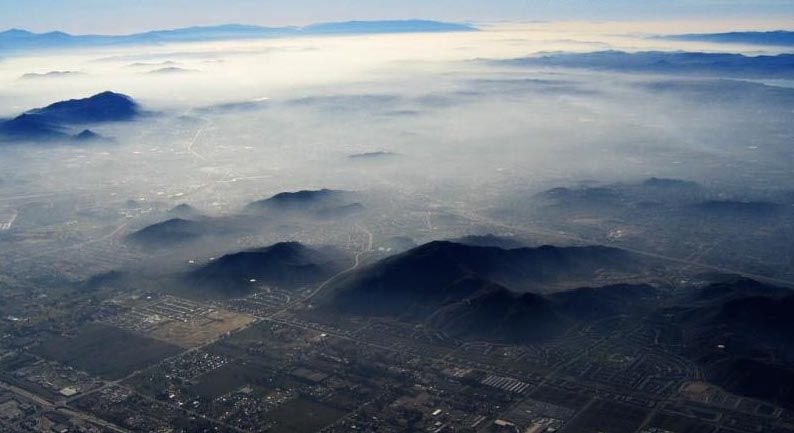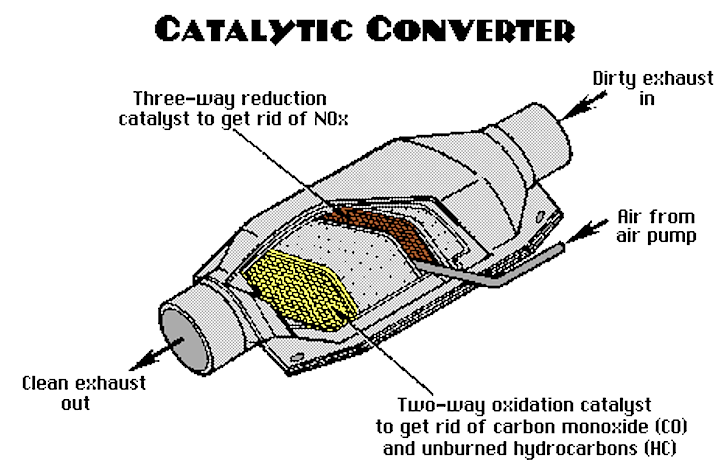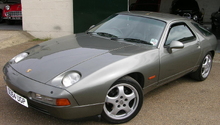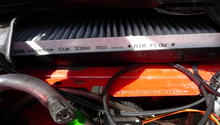Porsche 928: Smog Laws
There are many questions out there regarding smog requirements for the Porsche 928. This article will supply some of the answers.
This article applies to the Porsche 928 (1979-1995).
The word "smog" may have first appeared, quite ironically, in an 1893 article in the LA Times. It is the conjunction of the words "smoke" and "fog." A scientific paper presented in London in 1905, observed that "smog seemed to be a condition of urban areas." The skies seemed clearer in the country. Too often the concept of "global warming" is thrown into discussions about smog. Smog has been around for at least 100 years, long before the threat of global warming. Smog partially exists because of the reactions the air has with auto emissions. Here is how the Porsche 928 has to deal with it.
What is Smog?
Smog isn't only a problem for big cities like LA and New York. It appears wherever the atmosphere is able to react with other chemicals. Photochemical smog (the smog you can see) comes from three major chemical molecules: oxides of nitrogen (NO), carbon monoxide (CO), and hydrocarbons (HC). The exhaust produced by gasoline engines is mostly composed of nitrogen, water vapor, and carbon dioxide. But untreated, car exhausts release NO, CO, and HC. When the untreated exhaust hits the sunlight, it turns these gasses into smog soup. After World War II, more people moved to the city, more people started driving cars, and more people started noticing that the air was turning a hazy brown and yellow and making their lungs hurt.

London's "Great Smog" in December of 1952 was believed to have directly contributed to the deaths of over 4,000 people. In later weeks and months, another 8,000 died. Britain realized that it had the responsibility of trying to clean the air. They passed the Clean Air Act to regulate fuel emissions. The U.S. Congress followed suit and passed a Clean Air Act in 1955 that regulated industrial pollution but did not address auto exhaust. That changed in 1970 when the law was amended to include pollution from "mobile sources." It also gave birth to the EPA.

The Age of Emission Controls
When the EPA was born, the State of California had already formed the Air Resources Board (ARB) two years earlier. With major cities on the coast, and surrounded on three sides by mountains, urban areas in California had already become pots for smog soup. The ARB was enacting stringent rules for auto emissions. California was a vital market for auto manufacturers, so they started developing emission controls to meet the state's standards. The EPA's regulations for the other 49 states were lower, allowing California to keep its more stringent guidelines.

In 1977, the Clean Air Act was again amended to require states to implement vehicle inspection programs in cities that did not meet Federal air quality standards. To enforce the guidelines, states tied auto registration to passing smog inspections. Right now, 31 states and the District of Columbia require periodic emissions testing in parts or all of their state. The test usually has three parts: Emission Measurements; Visual Inspection, and Emission Control Functionality Test. During the visual inspection, the technician can fail a vehicle that has "an emissions control system that is missing, modified, or disconnected."

Auto manufacturers developed new technologies to clean emissions. Oil companies began producing cleaner burning gasoline. Cars were being equipped with catalytic converters, whose high operating temperatures "scrub" the gasses coming out of the exhaust manifold.
Catalytic Converters and Air Pumps
To efficiently oxidize the pollutants in the exhaust gasses, catalytic converters have to reach temperatures of 700 to 1,000 degrees Fahrenheit. From a cold start, it takes a converter a few minutes to reach those temperatures. Enter the Porsche 928 air pump. The pump forces air into the cold converter to help it reach operating temperatures more quickly. Somewhat like using a bellows to fan the flames of a fire. Once the converter has reached its operating temperature, the air pump cuts out. One school of thought reasons, "Why even keep it on the car? It's one more thing the engine has to run. Smog checks are only performed once the engine has warmed up and the pump has shut itself off." Another school of thought reasons, " The air pump helps keep the exhaust clean until the converter kicks in."

The EPA has decided to use the stricter California guidelines as the national standard starting in 2016. They are also working with California for even stricter guidelines for 2017-2025. If you've removed the air pump, you may fail the visual inspection. The fact that the last 928 was built in 1995 presents some interesting scenarios. Many states give smog inspection exemptions to cars that were built before a certain year. Some states give exemptions to cars that are classified as "Antique," "Vintage," or "Classic." Your best bet is to check with your state's DMV to see if your car is exempt from smog inspections. An excellent resource is listed below in the Related Discussions. This site will tell you, on a state-by-state basis, which model year vehicles are exempt, what classifies as a classic or vintage car, or whether or not that state even requires a smog inspection.

Related Discussions and Sites
- Smog Check - DMV.org
- California 35 Year Classic Car Smog Rules - Rennlist.com
- Running Without Smog Pump - Rennlist.com
- States that Have the Same Smog Requirements - Rennlist.com
- Smog FAQ - dmv.ca.gov
- 6 Vehicles Exempt from Smog Certification - Carsdirect.com
- US Emission Standards - Wikipedia.org






